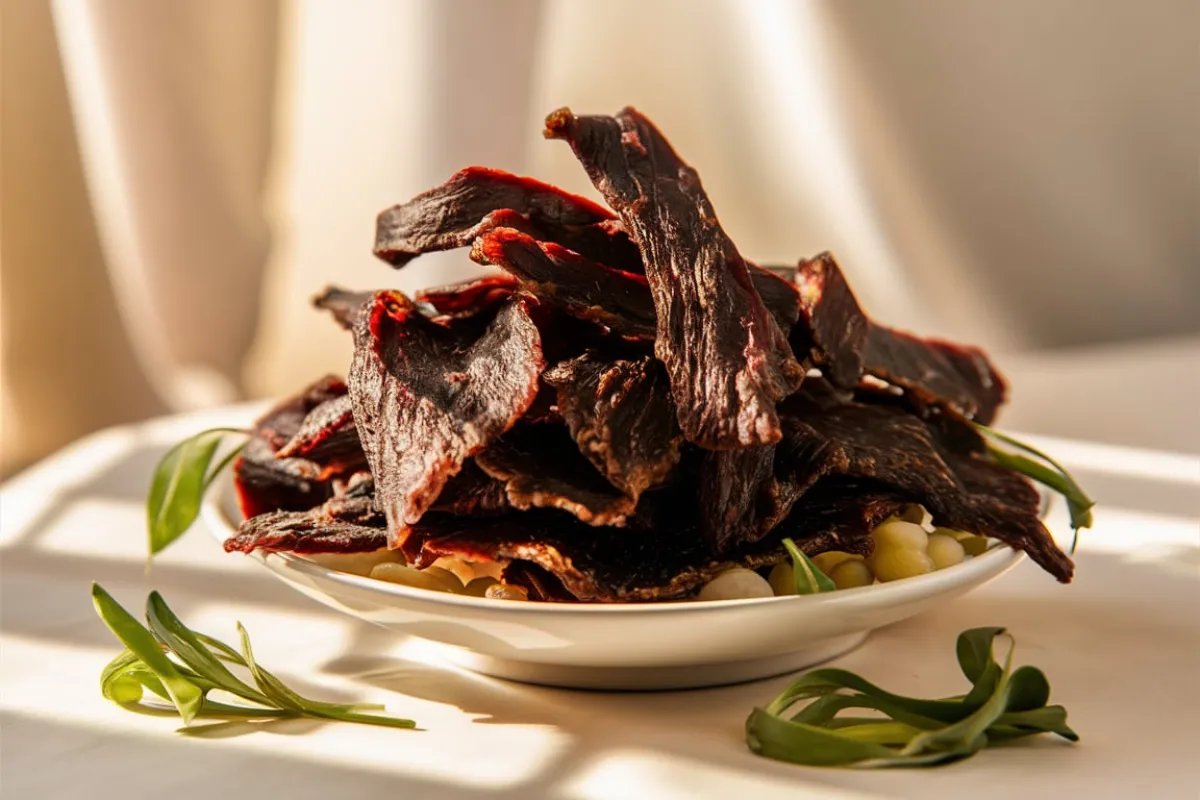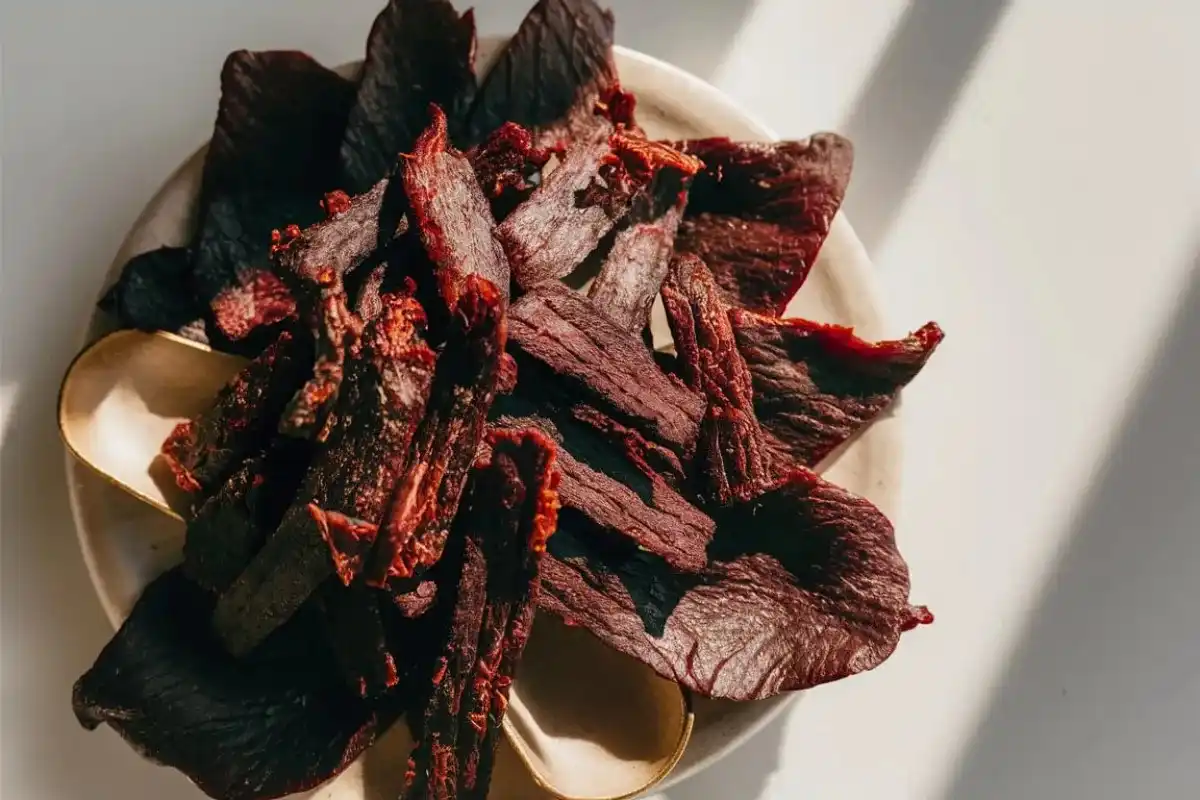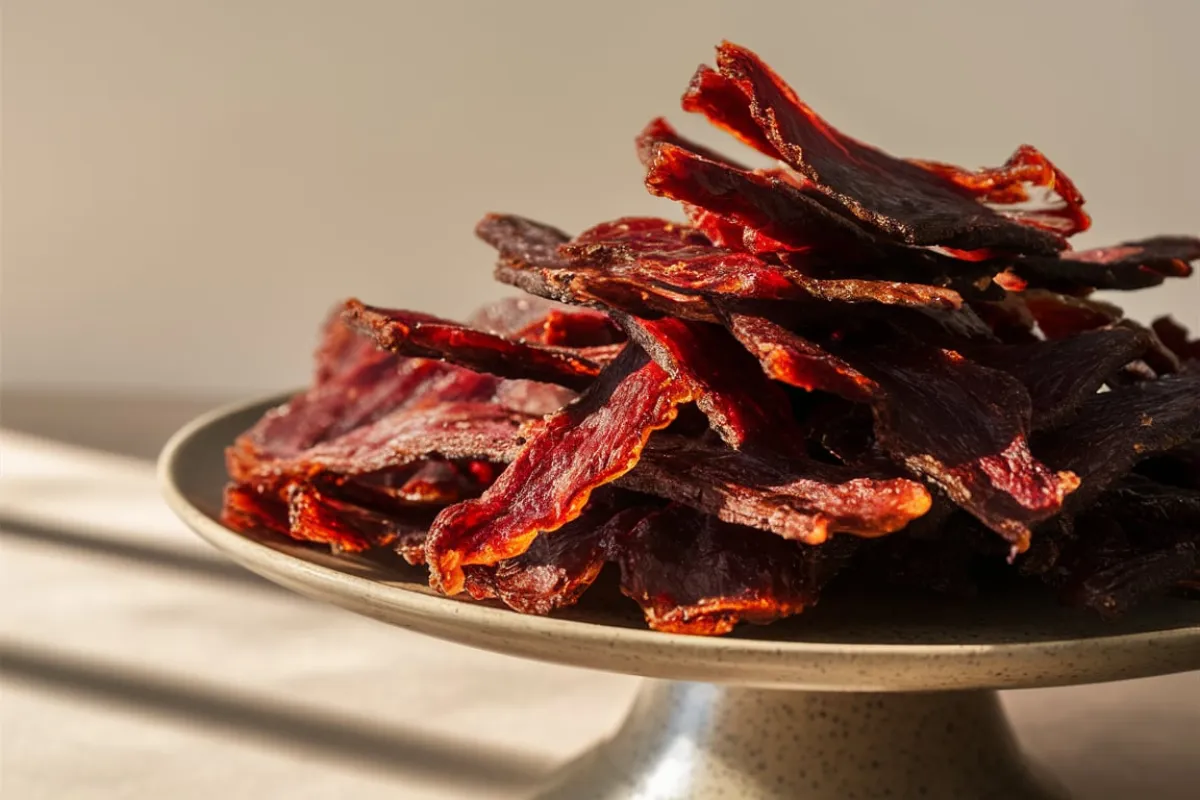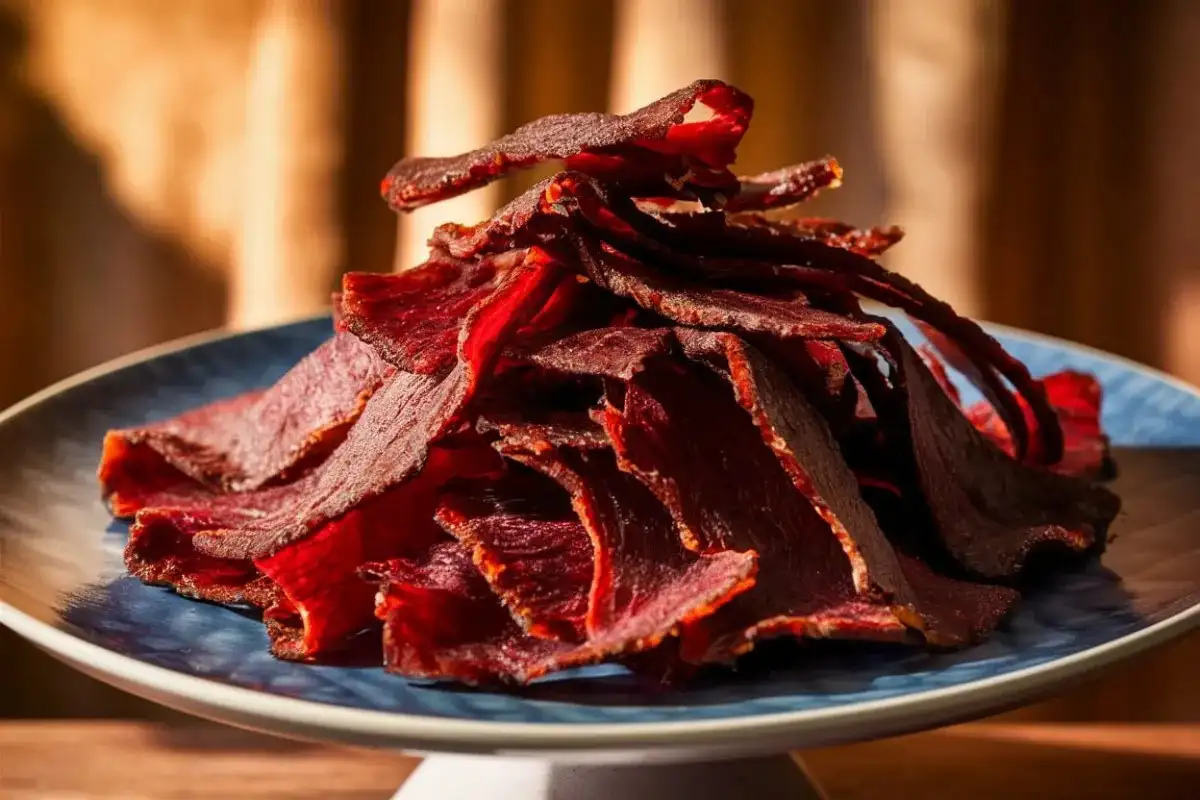Beef jerky, a popular snack worldwide, has a well-deserved reputation for its long shelf life and convenient portability. This dried meat treat is enjoyed by hikers, campers, and those simply looking for a protein-packed snack. However, a common question arises among jerky enthusiasts and consumers: Will beef jerky mold? The answer is yes, under certain conditions. Understanding the factors that contribute to mold growth on beef jerky and learning how to prevent it is crucial for maintaining freshness and quality.
This comprehensive guide will delve into the causes of mold on beef jerky, identify signs of mold, and provide practical tips for prevention and storage.
Causes of Mold on Beef Jerky

To understand why mold might appear on beef jerky, it’s essential to first grasp how mold forms. Mold is a type of fungus that grows from tiny spores that float in the air. These spores land on various surfaces, including food, and begin to grow when they find the right conditions — warmth, moisture, and a food source.
Mold growth on beef jerky is primarily caused by three main factors: moisture content, air exposure, and inadequate preservation techniques. Let’s explore these factors in more detail:
Moisture Content
One of the most significant factors leading to mold growth on beef jerky is moisture. Traditional jerky-making involves drying meat to remove most of its moisture content, which is why jerky can last for long periods. However, if the drying process is not thorough or the jerky absorbs moisture from the environment, mold can begin to grow. High moisture content can occur due to several reasons:Improper Drying: The jerky may not have been dried sufficiently during the production process, leaving behind moisture that encourages mold.
Environmental Humidity: Even after proper drying, if the jerky is exposed to a humid environment, it can reabsorb moisture, leading to mold growth. Learn more about how humidity impacts mold growth in foods.
Air Exposure
Mold spores are ubiquitous and can settle on any surface. When beef jerky is exposed to air, particularly in environments with fluctuating humidity levels, it becomes susceptible to mold. This exposure can happen due to:Inadequate Packaging: Packaging that isn’t airtight or has been compromised can allow air and moisture to come into contact with the jerky, creating a perfect breeding ground for mold.
Frequent Opening: Each time a bag or container of jerky is opened, new air, which contains mold spores, can enter and increase the risk of mold formation.
Inadequate Preservation Techniques
Different preservation techniques affect the likelihood of mold growth. Traditional methods, such as smoking or using natural preservatives like salt, help inhibit mold. However, modern production may sometimes skip these steps or use minimal preservation techniques, which can make the jerky more vulnerable to mold.
How to Spot Mold on Your Jerky
It’s essential to distinguish between mold and other harmless changes that may occur in beef jerky over time, such as the development of white specks known as a fat bloom. Identifying mold accurately is crucial for ensuring food safety and quality.
Signs That Indicate Mold on Beef Jerky:
- Visual Inspection: Mold typically appears as fuzzy, powdery, or irregular patches on the surface of the jerky. These patches can be white, green, blue, or black. Unlike the natural white fat bloom, which is smooth and evenly distributed, mold spots are usually textured and uneven.
- Texture Changes: Mold-affected jerky may feel slimy or sticky to the touch. This is a clear indicator that the jerky is not safe to consume.
- Odor Check: Fresh beef jerky should smell savory, slightly smoky, or seasoned, depending on the flavor. Moldy jerky, however, often has a musty or sour smell, which is a red flag.
For more insights on how to handle beef jerky and prevent quality degradation, refer to this guide on beef jerky.
Why Does Beef Jerky Mold?

The mold growth on beef jerky is a direct consequence of several interrelated factors. Here’s a deeper look at why mold appears on beef jerky:
- Moisture and Humidity Levels
Moisture is the number one enemy of beef jerky. The more moisture content left in the jerky, the higher the chances of mold. Humid conditions, such as those found in kitchens or pantry shelves, can cause the jerky to absorb moisture from the air, leading to mold. This is particularly true if the jerky is stored in environments with high humidity or frequent temperature changes. - Improper Packaging
Packaging plays a crucial role in preserving jerky. Ideally, beef jerky should be stored in airtight packaging that prevents any air exchange. If the packaging is faulty or not adequately sealed, air and moisture can enter, promoting mold growth. This is why it’s essential to check for packaging integrity before purchasing or storing jerky. Consider using vacuum-sealed bags or containers with tight-fitting lids to ensure maximum freshness. For more detailed storage techniques, explore how to store beef jerky long term. - Inconsistent Drying Processes
The drying process is critical in beef jerky production. If the meat isn’t dried evenly or thoroughly, some parts may retain moisture, creating pockets that are more likely to mold. This is often an issue with homemade jerky or small-batch productions where drying conditions aren’t always consistent. - Type of Ingredients Used
Some ingredients in beef jerky recipes can increase the risk of mold. For instance, using fresh herbs, fruits, or vegetables without adequate drying can introduce extra moisture. Additionally, jerky made without preservatives or with low salt content may be more prone to mold. For tips on choosing the right ingredients, see Choosing the right cuts for beef jerky.
Best Practices for Storing Beef Jerky
Proper storage is essential to prevent mold and ensure that beef jerky remains fresh and edible for as long as possible. Here are some effective methods for storing beef jerky:
- Use Airtight Containers: Store jerky in airtight containers or vacuum-sealed bags to prevent air and moisture from entering.
- Store in a Cool, Dry Place: Always keep jerky away from direct sunlight and in a cool, dry place to avoid temperature fluctuations and humidity exposure.
- Consider Refrigeration for Extended Storage: If you plan to store jerky for a long time, refrigeration can help slow down any potential mold growth by keeping the jerky in a consistently cool environment.
- Add Desiccant Packs: Placing a desiccant pack in the container can help absorb any residual moisture and keep the jerky dry.
Making Homemade Jerky Without Mold
Making beef jerky at home is a rewarding process that allows for customization in terms of flavors and ingredients. However, it also requires attention to detail to ensure the jerky remains mold-free. Here are steps to help make your homemade beef jerky safe from mold:
- Select Lean Cuts of Meat
Start by choosing lean cuts of meat like top round, bottom round, or sirloin. Lean cuts have less fat, reducing the risk of rancidity and spoilage. - Trim Off Excess Fat
Even within lean cuts, there may be small pockets of fat. Make sure to trim off as much fat as possible before marinating and drying the meat. Fat does not dry well and can lead to faster spoilage. - Use a Marinade with Natural Preservatives
Incorporate ingredients like salt, vinegar, or soy sauce into your marinade. These natural preservatives help inhibit the growth of mold by reducing moisture and creating an inhospitable environment for spores. - Dry the Jerky Properly
Use a dehydrator, oven, or smoker to dry the meat thoroughly. Ensure the temperature stays consistent at around 160°F (71°C) to kill off any potential bacteria. Drying should continue until the jerky bends without breaking, which typically takes 4-8 hours depending on the thickness of the strips. - Store in Proper Packaging
After drying, allow the jerky to cool before packaging. Store in airtight containers or vacuum-sealed bags and keep them in a cool, dry place. For more tips on long-term storage, read how to store beef jerky long term.
Creative Uses for Beef Jerky to Avoid Waste

If you have a large batch of jerky and want to ensure it doesn’t go to waste, consider these creative culinary ideas:
- Incorporate Into Dishes: Add beef jerky to soups, stews, or chili for a smoky flavor boost. It also pairs well with pasta dishes or as a topping for salads.
- Grind into Powder: Jerky can be ground into a fine powder and used as a seasoning for various dishes or even popcorn.
- Jerky Trail Mix: Combine jerky pieces with nuts, dried fruits, and chocolate chips for a high-protein trail mix that’s perfect for hiking or snacking.
Extending the Shelf Life of Beef Jerky
To keep your beef jerky fresh for as long as possible, consider these additional tips:
- Rotate Stock Regularly: Always use older jerky first and make sure to rotate your stock to avoid keeping jerky for too long.
- Check Packaging Integrity: Before storing, check that the packaging is intact and airtight. If you’re unsure, repackage the jerky in vacuum-sealed bags.
- Avoid Storing Near Strong Odors: Jerky can absorb odors from its surroundings, so avoid storing it near strong-smelling foods or chemicals.
Frequently Asked Questions (FAQs)
- Can beef jerky mold?
Yes, beef jerky can mold if it is exposed to moisture or stored improperly. Ensuring low moisture content and proper storage can prevent mold growth. - How can I prevent mold on beef jerky?
Store beef jerky in airtight containers, use desiccant packs, and keep it in a cool, dry place. Proper drying and packaging are key to preventing mold. - What does mold on beef jerky look like?
Mold on beef jerky appears as fuzzy, white, green, blue, or black spots. It may also have a musty or sour odor and feel sticky or slimy. - Is it safe to eat beef jerky with white spots?
White spots could be harmless fat blooms, but if they appear fuzzy or have an unusual smell, it could be mold, and the jerky should not be consumed. - How long does beef jerky last without molding?
When stored properly in an airtight container in a cool, dry place, beef jerky can last several months without molding.
Conclusion
Understanding why and how beef jerky molds is crucial for maintaining its quality and extending its shelf life. By managing moisture levels, ensuring proper storage, and following best practices for drying and packaging, you can enjoy delicious, mold-free beef jerky for months. Whether you make jerky at home or buy it from the store, taking these precautions will help keep your snack fresh, safe, and ready to enjoy whenever you need a protein-packed treat.
Would you like to explore other aspects or receive more tips related to beef jerky?

